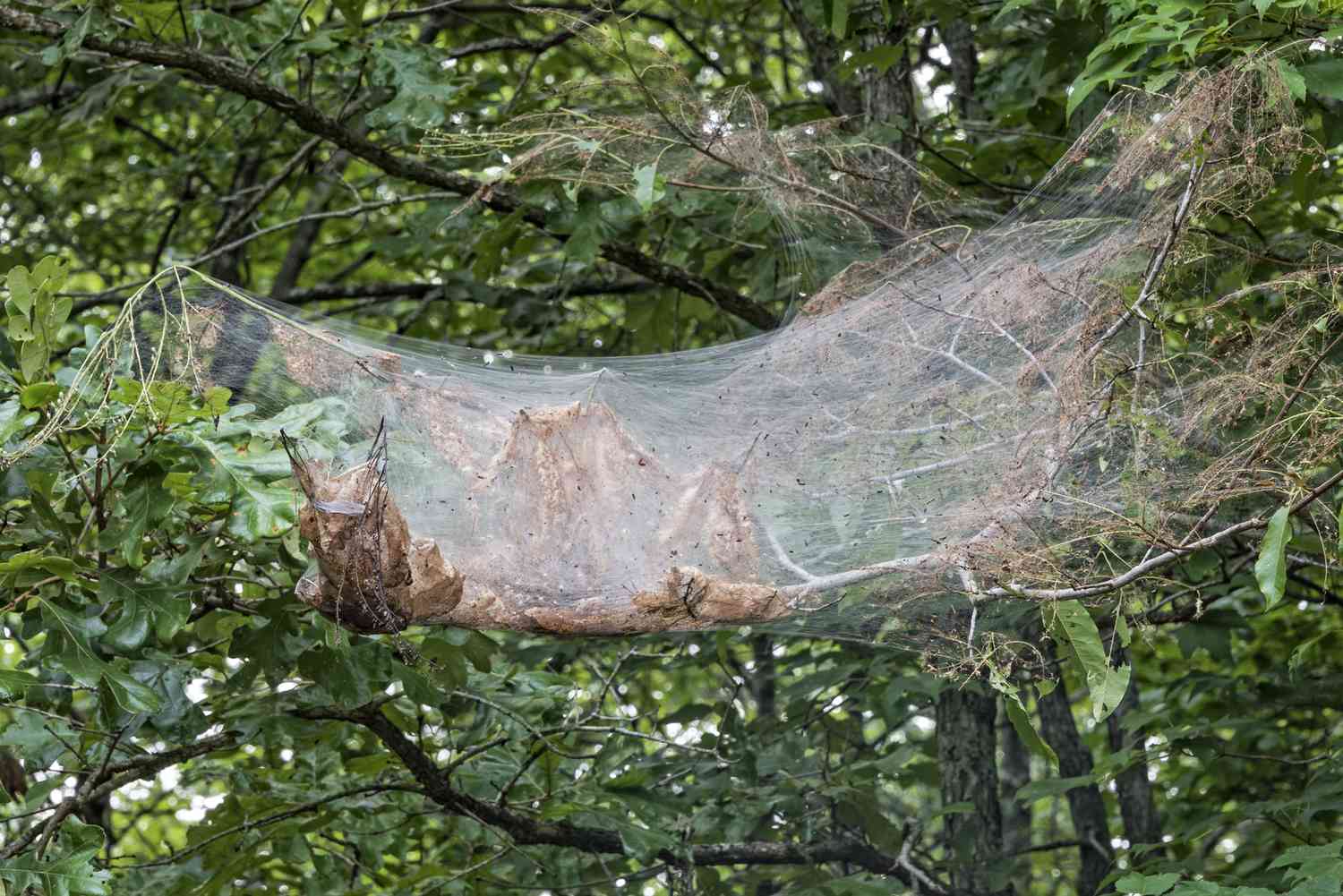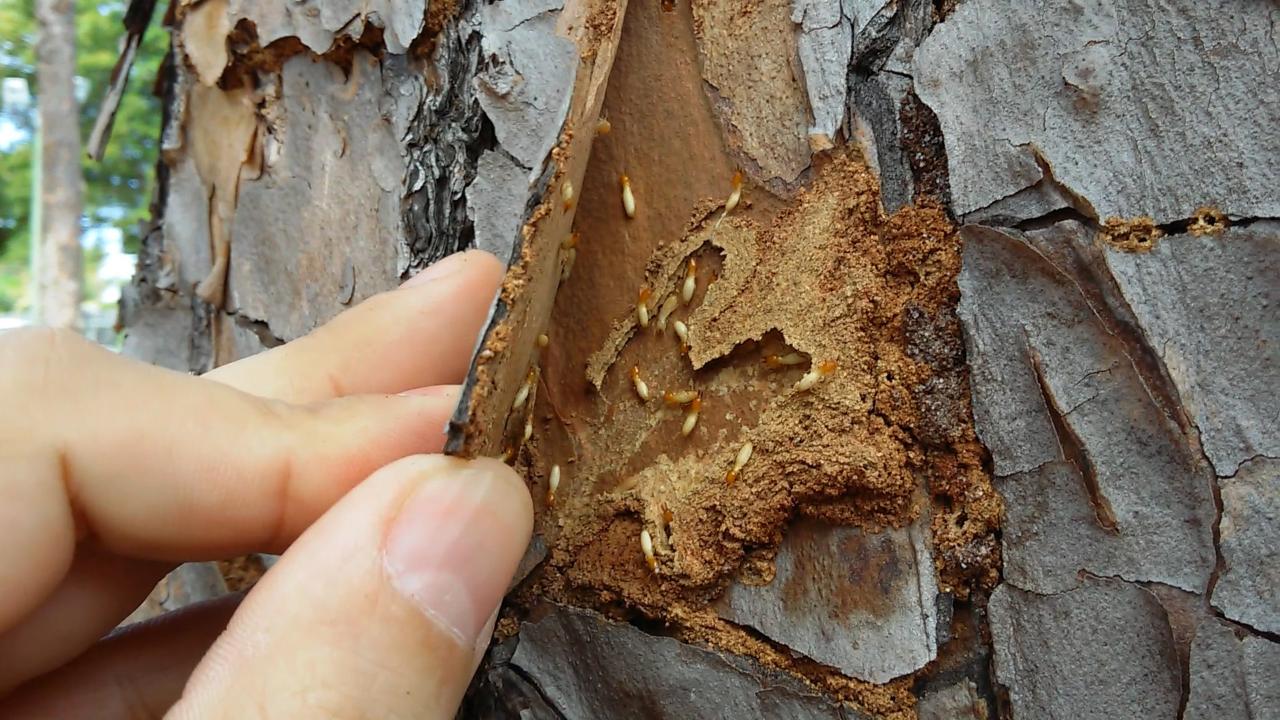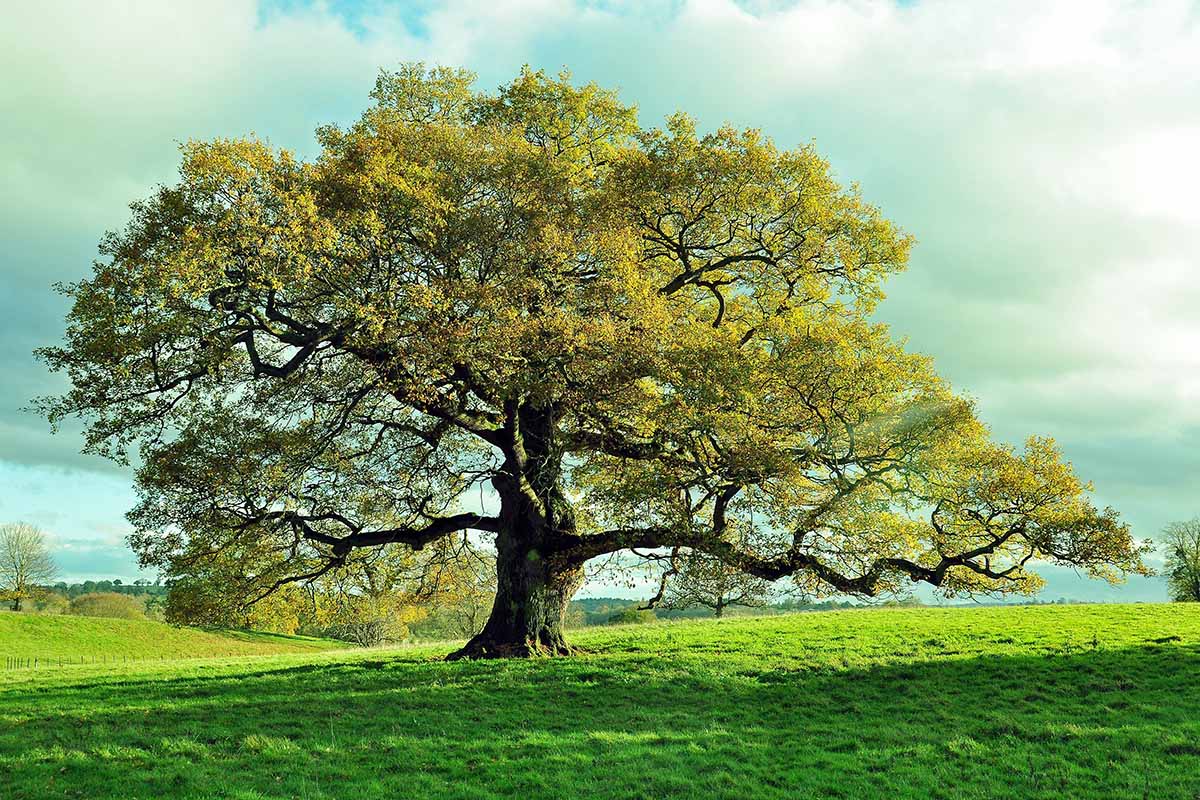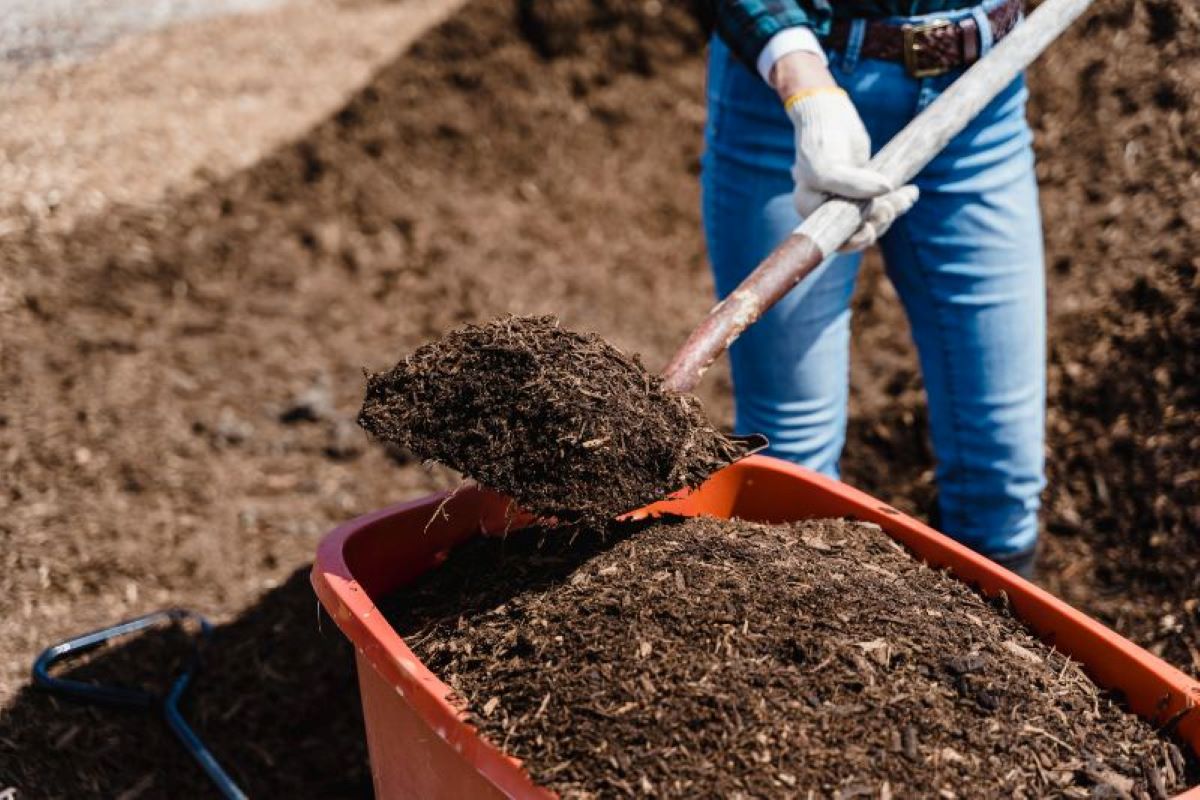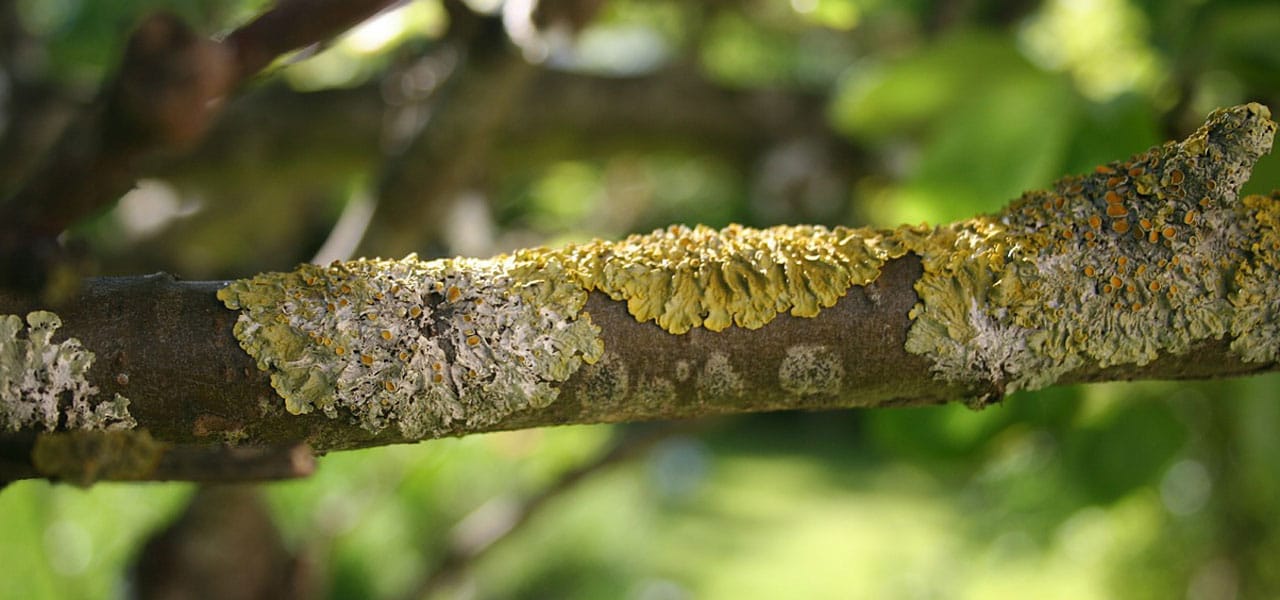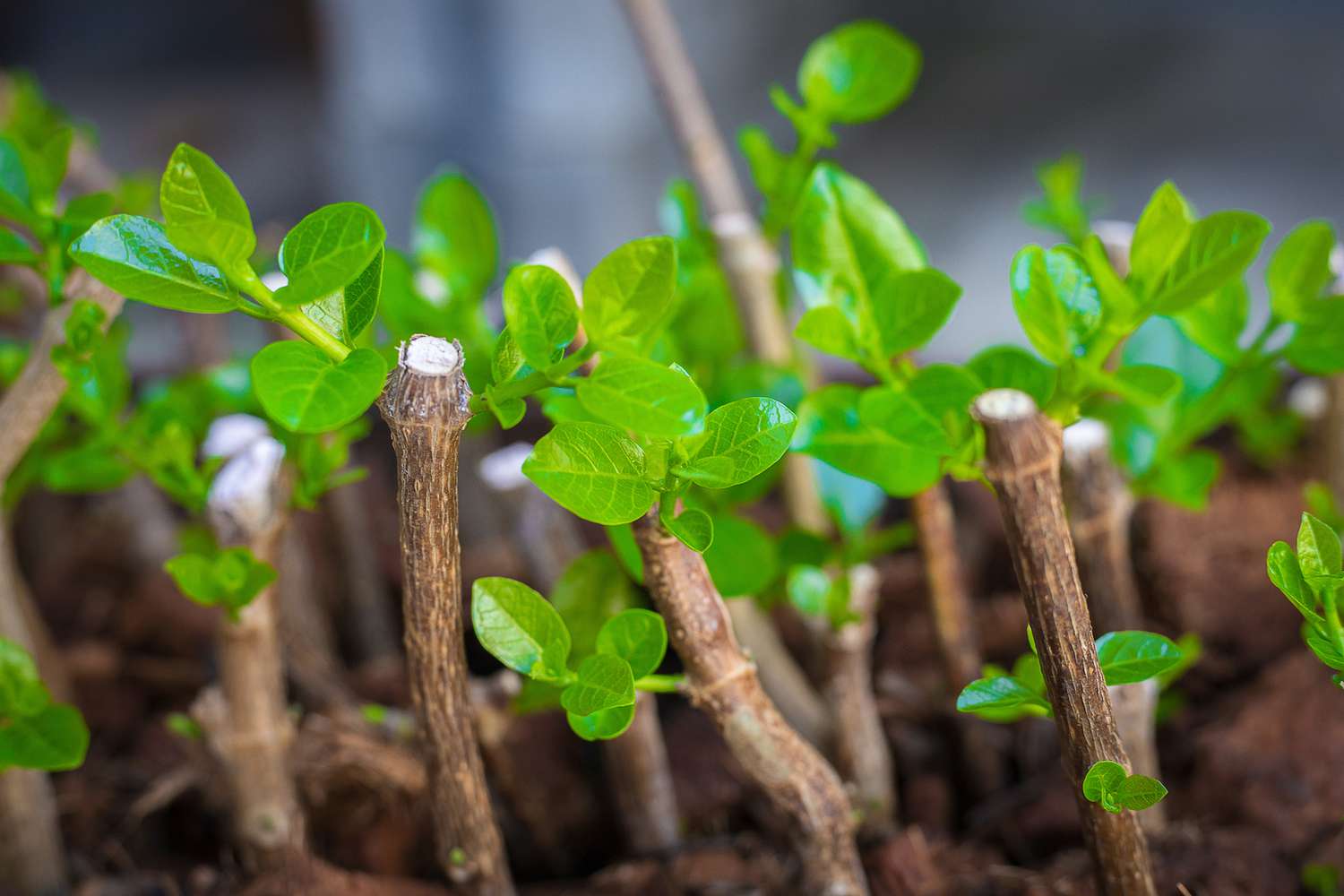Home>Gardening Techniques>Plant Care>How To Get Trees To Grow Faster
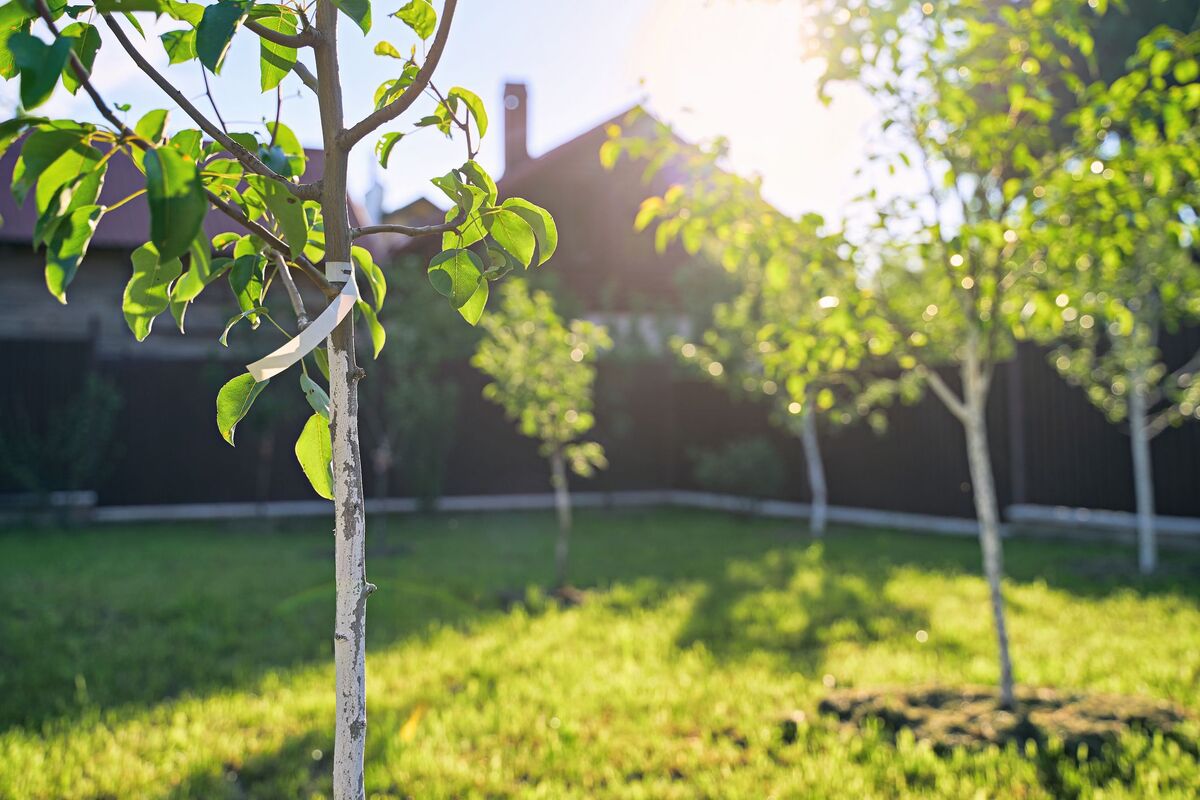

Plant Care
How To Get Trees To Grow Faster
Modified: February 8, 2024
Learn the best plant care techniques to make trees grow faster and healthier. Discover expert tips and tricks to boost tree growth and achieve stunning results.
(Many of the links in this article redirect to a specific reviewed product. Your purchase of these products through affiliate links helps to generate commission for Chicagolandgardening.com, at no extra cost. Learn more)
Table of Contents
- Introduction
- Importance of Tree Growth
- Factors Influencing Tree Growth
- Choosing the Right Tree Species
- Planting Techniques for Faster Tree Growth
- Providing Proper Nutrients to Trees
- Watering Strategies for Accelerated Tree Growth
- Pruning and Trimming for Faster Growth
- Protecting Trees from Pests and Diseases
- Conclusion
Introduction
Welcome to the world of plant care! Whether you’re a seasoned gardener or a green thumb enthusiast, knowing how to help your trees grow faster can be a rewarding and fulfilling experience. Trees play a vital role in our environment, providing shade, improving air quality, and offering habitat for wildlife. They also add beauty and value to our landscapes.
Understanding the factors that influence tree growth is essential for success in nurturing and accelerating the growth process. By choosing the right tree species, employing effective planting techniques, providing proper nutrients and water, and implementing regular pruning and trimming, you can promote faster and healthier tree growth.
In this article, we will take you on a journey through the world of tree care, exploring various strategies and techniques that can maximize the growth potential of your trees. From selecting the perfect tree species for your specific climate to protecting them from pests and diseases, we will cover everything you need to know to help your trees thrive.
So, whether you’re looking to create a lush, green landscape or hoping to boost the growth of a particular tree, sit back, relax, and let’s dive into the fascinating world of tree care.
Importance of Tree Growth
Trees are not only aesthetically pleasing, but they also play a crucial role in maintaining a healthy and balanced ecosystem. The growth of trees is vital for several reasons:
- Environmental Benefits: Trees act as natural air purifiers, absorbing carbon dioxide and releasing oxygen. They help combat climate change by reducing the levels of greenhouse gases in the atmosphere. Additionally, trees provide shade and lower temperatures in urban areas, mitigating the heat island effect.
- Ecosystem Support: Trees are the foundation of many ecosystems, providing food, shelter, and nesting sites for a wide variety of wildlife. They help create biodiversity hotspots and support the delicate web of life.
- Soil Conservation: The roots of trees help prevent soil erosion by stabilizing the soil and reducing surface runoff. They also improve soil fertility by replenishing nutrients and organic matter.
- Water Regulation: Trees have a remarkable ability to absorb and store water. They play a vital role in regulating the water cycle, reducing the risk of flooding and improving water quality by filtering pollutants.
- Human Health Benefits: Studies have shown that spending time in nature, surrounded by trees, has numerous health benefits. Being in a green environment can reduce stress, lower blood pressure, and improve overall mental well-being.
Understanding the importance of tree growth is essential for our own well-being and the health of the planet. By promoting the growth of trees, we can contribute to a more sustainable and resilient ecosystem.
Factors Influencing Tree Growth
Various factors can influence the growth of trees. By understanding these factors, we can make informed decisions and provide the ideal conditions for accelerated growth. Here are some key factors to consider:
- Climate: Trees have specific climate requirements for optimal growth. Factors such as temperature, rainfall, and sunlight availability play a significant role. It’s crucial to select tree species that are well-suited to your local climate.
- Soil Quality: The composition and fertility of the soil greatly affect tree growth. Trees thrive in well-drained soils with a balance of organic matter, nutrients, and pH levels. Conducting a soil test can help determine if any amendments are needed.
- Water Availability: Adequate water is essential for tree growth. Too little or too much water can negatively impact their health. Consider the water requirements of the tree species you’re planting and ensure proper watering practices, especially during dry periods.
- Light Exposure: Trees require sunlight for photosynthesis, the process by which they convert light energy into food. The amount of light required varies between species. Make sure to plant trees in areas where they can receive the necessary sunlight for optimal growth.
- Nutrient Availability: Trees need a balanced supply of essential nutrients for healthy growth. Nitrogen, phosphorus, and potassium are the primary macronutrients, while micronutrients like iron and magnesium are also important. Fertilization can help supplement nutrient deficiencies in the soil.
- Competition: Nearby plants and trees can compete with each other for resources like water, sunlight, and nutrients. Ensure adequate spacing between trees to minimize competition and promote their individual growth.
- Pruning and Maintenance: Regular pruning and maintenance practices can significantly impact tree growth. Pruning helps remove dead or damaged branches, improves airflow and sunlight penetration, and shapes the tree’s form. It encourages new growth and strengthens the overall structure.
- Pests and Diseases: Insects, pests, and diseases can compromise the health and growth of trees. Regular monitoring and implementation of appropriate pest and disease control measures are essential for maintaining optimal growth and minimizing damage.
By considering these factors and addressing any limitations or challenges, you can create the ideal environment for your trees to thrive and grow at an accelerated pace.
Choosing the Right Tree Species
When it comes to accelerating tree growth, selecting the right tree species is key. Each tree species has unique characteristics and requirements, so it’s important to choose ones that are well-suited to your specific climate and growing conditions. Here are some factors to consider when choosing the right tree species:
- Climate Hardiness: Different tree species have different tolerances to temperature extremes, rainfall patterns, and soil conditions. Research the hardiness zones and climate requirements of potential tree species to ensure they can thrive in your area.
- Growth Rate: Some tree species naturally grow faster than others. If your goal is to accelerate growth, consider trees known for their fast growth rates, such as certain varieties of poplar, willow, or silver maple. However, keep in mind that fast-growing trees may have weaker wood and require more maintenance.
- Size and Space: Consider the mature size of the tree species you’re considering and ensure you have enough space for it to grow. Take into account nearby structures, power lines, and other trees. Planting trees that outgrow their surroundings can lead to problems in the long run.
- Soil and Sunlight Requirements: Different tree species have varying soil and sunlight preferences. Some trees prefer well-drained soils, while others tolerate wetter conditions. Similarly, some trees thrive in full sun, while others require shade. Match the tree species to your soil and sunlight availability.
- Desired Purposes: Consider the specific purposes you have in mind for the trees. Are you looking for shade trees, flowering trees, fruit trees, or trees to attract wildlife? Determine what characteristics and benefits you want from the trees and choose species accordingly.
- Native Species: Planting native tree species promotes biodiversity and supports the local ecosystem. Native trees are adapted to the local climate and often require less maintenance and resources to thrive. Research native tree species in your area and prioritize their selection.
By carefully choosing the right tree species for your specific needs and conditions, you can set your trees up for success and ensure they have the best chance of growing at an accelerated rate.
Planting Techniques for Faster Tree Growth
The way you plant a tree can have a significant impact on its growth and development. By following proper planting techniques, you can give your trees the best start for accelerated growth. Here are some essential planting techniques to consider:
- Choose the Right Time: Plant trees during their dormant season, either in early spring or late fall, when the soil is workable. Avoid planting during extreme weather conditions, such as excessive heat or cold.
- Prepare the Site: Ensure the planting site is well-prepared before digging the hole. Remove any weeds, grass, or other plants competing for resources. Loosen the soil to allow for better root penetration and drainage.
- Dig the Proper Hole: Dig a hole that is wider and slightly shallower than the root ball or container. The hole should be wide enough to accommodate the root system without crowding or bending the roots.
- Handle the Roots with Care: Be gentle when handling the roots to avoid damage. If the tree has wrapped roots, carefully remove any bindings or burlap, ensuring the root ball remains intact.
- Position the Tree: Place the tree in the center of the hole, ensuring that the root collar is level with or slightly above the ground surface. Adjust the positioning to ensure the tree stands straight and upright.
- Backfill and Mulch: Fill the hole with the excavated soil, gently firming it around the roots. Avoid compacting the soil excessively. Apply a layer of organic mulch around the base of the tree, leaving a small gap around the trunk to prevent moisture buildup and potential rot.
- Water Thoroughly: Immediately after planting, water the tree thoroughly to settle the soil and remove any air pockets around the roots. Provide regular and deep watering during the establishment period to promote root growth and development.
- Stake if Necessary: Depending on the size and stability of the tree, staking may be necessary to provide support. Use flexible ties to secure the tree to the stakes, allowing for some movement to encourage trunk strength.
- Maintain Careful Monitoring: Regularly monitor the newly planted tree for signs of stress, such as wilting or yellowing leaves. Adjust watering and follow proper maintenance practices to ensure the tree remains healthy and well-nourished.
By following these planting techniques, you can give your trees a strong foundation and optimize the conditions for accelerated growth.
Providing Proper Nutrients to Trees
Nutrients are essential for the healthy growth and development of trees. While trees can extract some nutrients from the soil naturally, providing supplemental nutrients can accelerate their growth and ensure optimal health. Here are some important considerations when it comes to providing proper nutrients to trees:
- Soil Testing: Before applying any fertilizers, it’s recommended to conduct a soil test to determine the nutrient levels and pH of the soil. This will help identify any deficiencies or imbalances and guide you in providing the appropriate nutrients.
- Macronutrients: Trees require three primary macronutrients – nitrogen (N), phosphorus (P), and potassium (K) – in varying quantities. Nitrogen promotes foliage growth, phosphorus aids in root development, and potassium supports overall plant health and resilience.
- Micronutrients: In addition to macronutrients, trees also require micronutrients in smaller amounts. These include elements like iron, manganese, zinc, and copper, among others. Micronutrient deficiencies can have a significant impact on tree growth and health.
- Organic Matter: Adding organic matter, such as compost or well-rotted manure, to the soil can improve its nutrient-holding capacity and provide slow-release nutrients. Organic matter also enhances soil structure and promotes beneficial microbial activity.
- Slow-Release Fertilizers: Slow-release or controlled-release fertilizers provide a steady supply of nutrients over an extended period. These fertilizers are applied to the soil around the tree and release nutrients gradually, reducing the risk of nutrient leaching and excessive vegetative growth.
- Timing and Frequency: It’s important to apply fertilizers at the appropriate time to maximize effectiveness. Fertilizing in early spring before the growing season begins is generally recommended. Avoid fertilizing late in the season, as it may promote late-season growth susceptible to winter damage.
- Proper Application: Follow the recommended application rates and guidelines provided by the fertilizer manufacturer. Apply the fertilizer evenly around the drip line of the tree, avoiding direct contact with the trunk. Water the area thoroughly after application to help the nutrients penetrate the soil.
- Monitor Nutrient Levels: Regularly observe the health and growth of your trees to detect signs of nutrient deficiencies or excesses. Yellowing or discolored leaves, stunted growth, or poor overall vigor may indicate nutrient imbalances. Adjust fertilization practices accordingly.
Remember, providing proper nutrients to trees is about maintaining a balance. It’s essential to understand the specific nutrient requirements of your tree species and tailor your fertilization practices accordingly. By providing the right nutrients at the right time, you can enhance tree growth and promote overall tree health.
Watering Strategies for Accelerated Tree Growth
Water is a vital component for the growth and survival of trees. Proper watering techniques can promote accelerated tree growth and ensure the health and vigor of your trees. Consider the following strategies when it comes to watering your trees:
- Deep Watering: Deep watering encourages the development of a strong and extensive root system. Instead of frequent shallow watering, apply water slowly and deeply to saturate the soil to the depth of the tree’s roots. This helps the tree access water in lower soil layers and promotes downward root growth.
- Establishment Period: Newly planted trees require extra attention during their establishment period. Water them consistently and deeply to help them establish their root systems. Monitor the soil moisture to prevent overly wet or dry conditions.
- Timing of Watering: Water your trees early in the day to allow time for foliage to dry before the cooler evening hours. This reduces the risk of disease development. Avoid watering late in the day, as prolonged moisture on leaves can promote fungal growth.
- Watering Frequency: The frequency of watering depends on several factors including tree species, soil type, weather conditions, and stage of growth. Generally, thorough watering once a week is sufficient for established trees. However, during periods of drought or extreme heat, more frequent watering may be necessary.
- Mulching: Apply a layer of organic mulch around the base of the tree, leaving a small gap around the trunk. Mulch helps retain soil moisture, regulates soil temperature, and reduces weed competition. It also improves soil structure as it breaks down over time.
- Watering Depth: Water should reach the root zone of the trees to be effective. Know the depth at which the roots of your tree species grow and adjust your watering technique accordingly. Deep-rooted trees may require longer watering times to ensure deep penetration into the soil.
- Monitor Soil Moisture: Regularly check the soil moisture levels around your trees, especially during hot and dry periods. You can use a moisture meter or simply dig a small hole to check the soil moisture content. Avoid overwatering, as it can lead to root rot and other issues.
- Rainwater Collection: Consider collecting rainwater for watering your trees. Rainwater is free from chlorine and other chemicals typically found in tap water. It can provide a natural and beneficial source of water for your trees, especially during dry periods.
Remember, proper watering is crucial for promoting accelerated tree growth. By providing adequate and consistent water supply, you can enhance the health, vitality, and growth of your trees.
Pruning and Trimming for Faster Growth
Pruning and trimming are essential practices for maintaining the health and promoting faster growth of your trees. By removing dead, damaged, or excessive branches, pruning helps redirect energy to areas of the tree that need it most. Here are some key considerations for pruning and trimming trees:
- Remove Dead and Diseased Branches: Dead and diseased branches not only detract from the overall aesthetics of the tree but can also pose a risk to its health. Regularly inspect your trees and prune away any dead or diseased branches to prevent the spread of infection and encourage new growth.
- Thinning Out the Tree Canopy: Thinning out the canopy by selectively removing some branches allows better airflow and sunlight penetration. This reduces the risk of fungal diseases and encourages new growth in the remaining branches.
- Prune Crossing or Rubbing Branches: When tree branches cross or rub against each other, it can lead to damage and create entry points for pests and diseases. Remove any crossing or rubbing branches to maintain the tree’s structural integrity and promote healthier growth.
- Identify and Remove Competing Branches: Identify branches that are competing for dominance or growing in undesirable directions. Prune them to maintain a balanced and well-spaced framework for the tree. This helps prevent weakness and encourages more efficient nutrient and energy distribution.
- Trimming for Shape and Size: Carefully shape and trim your trees to maintain their desired form and size. Regular aesthetic pruning can enhance the overall appearance of the tree and ensure it fits well within its surroundings.
- Avoid Over-Pruning: While pruning is beneficial, it’s important to avoid over-pruning. Removing too many branches at once can stress the tree and inhibit growth. Follow the general rule of thumb to remove no more than 25% of the tree’s canopy in a single year.
- Time Your Pruning: Timing is key when it comes to pruning. It’s generally recommended to prune during the dormant season, before the tree starts actively growing. This minimizes the risk of disease transmission and allows the tree to allocate resources towards new growth.
- Use Proper Pruning Tools: Use sharp and clean pruning tools to make smooth and precise cuts. Disinfect your tools between cuts, especially when dealing with diseased branches, to prevent the spread of pathogens.
- Consult an Arborist: If you’re unsure about proper pruning techniques or have concerns about potential tree hazards, consult with a certified arborist. They can provide expert advice and ensure the health and safety of your trees.
By properly pruning and trimming your trees, you not only enhance their growth potential but also maintain their structural integrity and overall health.
Protecting Trees from Pests and Diseases
Pests and diseases can pose significant threats to the health and growth of trees. Protecting your trees from these potential risks is essential for ensuring their vitality. Here are some important measures to consider when it comes to pest and disease management:
- Regular Monitoring: Regularly inspect your trees for any signs of pests, diseases, or unusual symptoms. Look for visible damage, discoloration, wilting leaves, unusual growths, or presence of insects.
- Identify the Pest or Disease: Proper identification of the pest or disease is crucial for effective management. Consult resources, such as field guides or extension services, or seek professional advice to accurately identify the issue.
- Cultural Practices: Maintain proper cultural practices, such as adequate watering, proper pruning, and adequate nutrition, to enhance the overall health and resilience of your trees. Healthy trees are better able to withstand and recover from pest and disease attacks.
- Sanitation: Practicing good sanitation around your trees helps reduce the risk of harboring pests and disease-causing organisms. Remove fallen leaves, debris, and infected plant material promptly to prevent the spread of pathogens.
- Integrated Pest Management (IPM): Adopt an integrated approach to pest management that combines various strategies, such as biological controls, cultural practices, and selective use of pesticides only when necessary. IPM focuses on long-term prevention and reducing the reliance on chemical interventions.
- Natural Predators: Encourage natural predators of pests, such as ladybugs or birds, by providing habitat and food sources. They can help control pest populations naturally without the need for chemical intervention.
- Proper Pruning: Pruning diseased or infested branches can help remove the source of infection and prevent further spread. Ensure you use clean and sterilized pruning tools to prevent cross-contamination.
- Chemical Control: If pest or disease populations reach damaging levels and other methods are ineffective, judicious use of pesticides may be necessary. Always follow the recommended dosage and application instructions, and use environmentally friendly products when possible.
- Consult Professionals: When dealing with severe pest infestations or complex diseases, it is advisable to consult with professional arborists or horticulturists who specialize in tree care. They can provide expert advice and treatment options specific to your situation.
By implementing proper pest and disease management strategies, you can maintain the health and vigor of your trees, allowing them to grow and thrive in a pest-free environment.
Conclusion
In the world of plant care, nurturing trees for accelerated growth is a rewarding and fulfilling endeavor. By understanding the factors that influence tree growth and implementing the right strategies, you can help your trees flourish and contribute to a healthier environment.
Choosing the right tree species, employing proper planting techniques, providing adequate nutrients and water, and implementing regular pruning and trimming are essential practices for promoting faster growth. Additionally, protecting trees from pests and diseases through monitoring, cultural practices, and integrated pest management helps maintain their vitality.
Remember that tree care is a continuous process. Regular observation, adjustments, and maintenance are necessary to ensure sustained growth and health. Taking the time to understand the specific needs of your trees, such as climate requirements, soil conditions, and water preferences, will greatly contribute to their overall well-being.
So, whether you’re creating a beautiful landscape, providing shade and habitat for wildlife, or simply enjoying the serenity that trees bring, investing in the growth of your trees is a worthwhile endeavor. By fostering healthy and vigorous trees, you not only enhance the beauty of your surroundings, but also contribute to the well-being of our planet.
